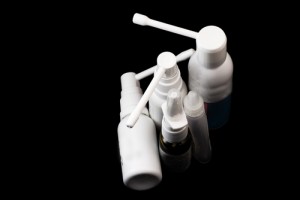Cystic Fibrosis Patients Tolerated Nasal Influenza Vaccine in New Study
Written by |

 Any concern that may exist over cystic fibrosis patients receiving nasal live-attenuated influenza vaccine (LAIV) due to infection risk may be unfounded, according to a new study conducted by Constantina Boikos, MScPH, from McGill University in Montreal. Dr. Boikos and colleagues evaluated 168 cystic fibrosis patients, ages 2 to 18 years, upon receiving LAIV and published their evaluation in the journal Pediatrics, entitled, “Safety of Live-Attenuated Influenza Vaccination in Cystic Fibrosis.”
Any concern that may exist over cystic fibrosis patients receiving nasal live-attenuated influenza vaccine (LAIV) due to infection risk may be unfounded, according to a new study conducted by Constantina Boikos, MScPH, from McGill University in Montreal. Dr. Boikos and colleagues evaluated 168 cystic fibrosis patients, ages 2 to 18 years, upon receiving LAIV and published their evaluation in the journal Pediatrics, entitled, “Safety of Live-Attenuated Influenza Vaccination in Cystic Fibrosis.”
“Overall, although we identified an increased risk of [adverse events following immunization] after LAIV vaccination, in particular an increase in wheezing, we did not find an increased risk of respiratory deterioration associated with LAIV in our study population,” stated the researchers in a news release. “Given the clinically severe impact of influenza infection in a child with [cystic fibrosis], as well as LAIV’s improved efficacy over [trivalent inactivated influenza vaccine], particularly in young children, the risks associated with infection outweigh the risk of minor respiratory and systemic symptoms associated with the vaccine.”
As flu vaccine clinics appear throughout the country this time of year, many individuals dread being vaccinated using needles. An alternative to needle-facilitated delivery of the influenza vaccine is nasal delivery. While this route of administration is more attractive for some individuals, people with cystic fibrosis may be apprehensive to the thought of inhaling a “virus” because they are at a higher risk for developing lung infections.
For 28 days following LAIV, patients are in the at-risk period for developing infection. However, during this time in the study, the rate of respiratory deterioration and all-cause hospitalization did not differ from that seen during the non-at-risk period of 29 to 56 days following vaccination. Three hospitalizations in the at-risk period and four in the non-at-risk period were reported due to respiratory deteriorations, although influenza virus was not detected in any respiratory deterioration occurrence. These occurrences were treated via two oral antibiotic treatments during the at-risk period and six during the non-at-risk period.
[adrotate group=”1″]
Aside from these hospitalizations, there were eleven all-cause hospitalizations. Additionally, 8% of patients experienced wheezing within the first week of LAIV, and 69% of these wheezing patients experienced symptoms on the day of vaccination. Children under the age of nine were more likely to experience these symptoms.
According to the Centers for Disease Control and Prevention, nasal LAIV covers four strains of the influenza virus this year: influenza A (H1N1) virus, influenza A (H3N2) virus, and two influenza B viruses. Children between the ages of two and eight years are recommended to receive nasal LAIV when it is available if no contraindications exist. Individuals with chronic diseases are cautioned against the nasal spray flu vaccine, but Dr. Boikos’ study suggests individuals with cystic fibrosis can safely receive the nasal form of LAIV.






